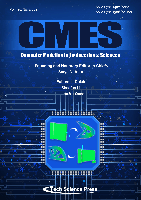
CMES-COMPUTER MODELING IN ENGINEERING & SCIENCES
Scope & Guideline
Pioneering Insights in Software Engineering and Modeling
Introduction
Aims and Scopes
- Computational Modeling Techniques:
The journal emphasizes the development and application of computational modeling techniques, including finite element methods, boundary element methods, and meshless methods. These techniques are crucial for solving complex engineering problems and simulating physical phenomena. - Interdisciplinary Applications:
Research published in the journal spans multiple disciplines, including mechanical engineering, civil engineering, biomedical engineering, and materials science. This interdisciplinary approach enhances the applicability of computational models to real-world problems. - Optimization and Design:
A significant focus is placed on optimization techniques, including topology optimization and design optimization. These studies aim to improve the performance and efficiency of engineering systems through innovative design methodologies. - Machine Learning and AI Integration:
The integration of machine learning and artificial intelligence into computational modeling is a growing area of interest. The journal encourages submissions that explore how AI can enhance modeling accuracy and efficiency. - Numerical Simulation and Analysis:
Numerical simulations play a pivotal role in validating theoretical models. The journal publishes research that employs numerical analysis to explore and validate complex systems across various engineering domains. - Sustainability and Environmental Impact:
With rising global concerns about sustainability, the journal addresses the modeling of environmental impacts and sustainable engineering practices, promoting research that contributes to ecological balance and resource efficiency.
Trending and Emerging
- Advanced Machine Learning Applications:
There is a noticeable increase in the application of advanced machine learning techniques within computational modeling. This includes the use of deep learning for image recognition, predictive analytics, and optimization problems, signifying a trend towards data-driven methodologies. - Cybersecurity and Resilience in Engineering:
Research focusing on cybersecurity measures within engineering systems, particularly in IoT and smart grid applications, is gaining traction. This reflects a broader societal concern regarding the security of interconnected systems and the need for resilience against cyber threats. - Sustainable and Green Engineering Practices:
An emerging theme is the modeling of sustainable engineering practices, including renewable energy systems and environmental impact assessments. This trend aligns with global sustainability goals and highlights the engineering community's responsibility towards ecological preservation. - Integration of Digital Twin Technology:
The use of digital twin technology for real-time monitoring and predictive maintenance in engineering systems is increasingly prevalent. This integration signifies a shift towards more dynamic and responsive engineering solutions. - Interdisciplinary Research Focus:
There is a growing trend towards interdisciplinary research that combines insights from various fields, such as biology, medicine, and environmental science, with engineering principles. This approach aims to address complex challenges that require multifaceted solutions.
Declining or Waning
- Traditional Structural Analysis:
Research focusing solely on traditional structural analysis methods appears to be waning. As computational techniques evolve, there is a noticeable shift towards more advanced modeling approaches that incorporate dynamic and complex interactions. - Standalone Numerical Methods without AI Integration:
There is a decline in studies that apply numerical methods in isolation, without integrating machine learning or AI. The trend indicates a preference for hybrid approaches that enhance predictive capabilities and model adaptability. - Purely Theoretical Studies:
The journal is seeing fewer purely theoretical papers that do not extend into practical applications or computational implementations. The focus is increasingly on research that synthesizes theory with practical applications and real-world implications. - Classical Fluid Dynamics Studies:
Research centered exclusively on classical fluid dynamics, without the integration of modern computational techniques or interdisciplinary applications, is less frequently represented, indicating a shift towards more complex fluid modeling scenarios.
Similar Journals
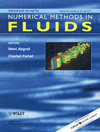
INTERNATIONAL JOURNAL FOR NUMERICAL METHODS IN FLUIDS
Bridging Mathematics and Engineering for Fluid SolutionsINTERNATIONAL JOURNAL FOR NUMERICAL METHODS IN FLUIDS, published by Wiley, has established itself as a leading platform for cutting-edge research in the fields of applied mathematics, computational mechanics, computer science applications, and mechanical engineering. With its ISSN 0271-2091 and E-ISSN 1097-0363, this journal is committed to disseminating high-quality, peer-reviewed articles that contribute to the advancement of numerical methodologies in fluid dynamics. Boasting a commendable 2023 impact factor that places it in the second quartile across multiple relevant categories, it provides insights into significant research dimensions that engage an audience of researchers, professionals, and students keen on the computational challenges of fluid flow. The journal's broad scope encompasses foundational and applied research, encouraging the exploration of new numerical techniques and algorithms. As an invaluable resource based in the United Kingdom, INTERNATIONAL JOURNAL FOR NUMERICAL METHODS IN FLUIDS remains dedicated to providing insights and fostering innovation in its domain, with a consistent publication history spanning from 1981 to 2024.

Mathematics in Engineering
Pioneering new frontiers in applied mathematics and engineering.Mathematics in Engineering, published by the American Institute of Mathematical Sciences (AIMS), is a premier open-access journal that has been advancing the field of mathematical sciences since its inception in 2019. With a focus on interdisciplinary applications, this journal embraces a broad spectrum of topics within analysis, applied mathematics, and mathematical physics. It has quickly garnered recognition, achieving notable rankings such as Q1 status in Analysis and Mathematical Physics, and Q2 in Applied Mathematics, according to the 2023 category quartiles. The journal’s Scopus rankings further underline its commitment to quality, with impressive placements reflecting its growing influence in the mathematical community. Accessible to all, Mathematics in Engineering aims to provide a platform for the dissemination of innovative research findings and methodologies, fostering collaboration among researchers, professionals, and students in the mathematical domain. For those looking to contribute to or deepen their understanding of current mathematical applications in engineering, this journal is an essential resource.
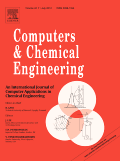
COMPUTERS & CHEMICAL ENGINEERING
Unlocking the Future of Chemical Engineering with Computational PowerComputers & Chemical Engineering, published by Pergamon-Elsevier Science Ltd, stands at the forefront of research at the intersection of chemical engineering and computer science. With an ISSN of 0098-1354 and an E-ISSN of 1873-4375, this esteemed journal has been a vital resource since its inception in 1977, with coverage extending to 2025. It is categorized as Q1 in Chemical Engineering (miscellaneous) and Q2 in Computer Science Applications for 2023, highlighting its significant impact within these fields. Notably, the journal boasts impressive Scopus ranks, placing it in the 84th and 82nd percentiles for Chemical Engineering and Computer Science Applications, respectively. A treasure trove for researchers, professionals, and students alike, Computers & Chemical Engineering focuses on the latest trends and innovations in computational techniques, algorithm development, and their applications to chemical processes, ensuring an avenue for groundbreaking findings and collaborative dialogues. While not an open-access publication, it remains a critical reference point for those seeking robust, peer-reviewed research in the rapidly evolving landscape of chemical engineering and computational methods.

JOURNAL OF ENGINEERING MATHEMATICS
Unveiling insights that shape the future of engineering.Welcome to the JOURNAL OF ENGINEERING MATHEMATICS, a leading scholarly platform published by Springer that has contributed significantly to the fields of engineering and mathematics since its inception in 1967. With an esteemed Q2 ranking in Engineering and a Q3 ranking in Mathematics according to the latest categorization, this journal is recognized for its rigorous peer-reviewed content that showcases innovative research across various mathematical and engineering disciplines. Researchers and professionals alike will find valuable insights within its pages, as it covers theoretical developments and practical applications that are pivotal for advancing knowledge in these critical areas. The journal maintains a robust presence in the global academic landscape, evidenced by its positioning in the 74th percentile for General Mathematics and 52nd percentile for General Engineering in Scopus rankings. As we look forward toward our convergence years spanning from 1967 to 2024, the JOURNAL OF ENGINEERING MATHEMATICS continues to invite submissions that foster interdisciplinary dialogue and exploration, making it an essential resource for students, academics, and industry experts.

COMPUTATIONAL MECHANICS
Transforming Theory into Practice in EngineeringCOMPUTATIONAL MECHANICS, published by SPRINGER, is a premier international journal that focuses on the intersection of applied mathematics, engineering, and computational methods. With a commendable Q1 ranking in multiple categories, including Applied Mathematics and Mechanical Engineering, this journal is pivotal for disseminating groundbreaking research and innovative methodologies that advance the field. The journal has steadily contributed to the academic community since its inception in 1986 and continues to lead discussions and practices in computational mechanics and related disciplines. With a robust impact reflected in its Scopus rankings—placing it within the top percentiles across various categories—COMPUTATIONAL MECHANICS serves as a crucial platform for researchers, professionals, and students seeking to explore and contribute to significant advancements in computational theory and mathematical applications. Although it does not currently operate under an open access model, the journal ensures wide accessibility through libraries and institutional subscriptions, fostering a rich exchange of knowledge in the global scientific community.

Applications in Engineering Science
Connecting Ideas, Advancing Engineering SolutionsApplications in Engineering Science is an innovative and highly-regarded open-access journal, published by ELSEVIER in the United Kingdom, focusing on the cross-disciplinary fields of Civil and Structural Engineering, Computational Mechanics, and Mechanical Engineering. Since its inception in 2020, the journal has rapidly established a solid reputation, landing in the Q2 quartile category across multiple engineering disciplines, reflecting its commitment to quality and relevance in the rapidly evolving engineering landscape. With Scopus rankings placing it prominently in the 66th percentile for Computational Mechanics and 58th for Mechanical Engineering, it serves as a vital platform for researchers, professionals, and students alike to share advanced methodologies, innovative applications, and interdisciplinary insights. The journal is committed to fostering open access to cutting-edge research, empowering readers worldwide to stay abreast of significant technological advancements and practical applications in engineering science.

ARCHIVES OF COMPUTATIONAL METHODS IN ENGINEERING
Driving Progress in Engineering through Advanced Computational Techniques.ARCHIVES OF COMPUTATIONAL METHODS IN ENGINEERING, published by SPRINGER, is a premier journal dedicated to advancing the fields of applied mathematics and computer science applications. With an impressive impact factor and a distinguished ranking of #5/635 in Applied Mathematics and #19/817 in Computer Science Applications as of 2023, this journal stands in the upper echelon of academic literature, evidenced by its classification in the Q1 category. Established in 1994 and running through to 2024, the journal serves as a vital platform for the dissemination of research that utilizes computational methods to solve complex engineering problems. Researchers, professionals, and students alike benefit from its rigorous peer-review process and high-quality articles, fostering innovation and collaboration within the computational engineering community. Although it does not offer Open Access, its insights are invaluable for those looking to stay at the forefront of engineering methodologies and computational advancements.
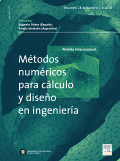
Revista Internacional de Metodos Numericos para Calculo y Diseno en Ingenieria
Connecting Scholars to Shape the Future of EngineeringRevista Internacional de Metodos Numericos para Calculo y Diseno en Ingenieria is a prominent academic journal dedicated to the dissemination of innovative research and methodologies in the fields of applied mathematics and engineering. Published by SCIPEDIA S L in Spain, this journal has been an essential resource for researchers since its inception in 1987, transitioning to an Open Access model in 2016 to enhance accessibility and foster collaboration among professionals and academics globally. Currently indexed in Scopus, it holds a Q4 category designation in both applied mathematics and miscellaneous engineering fields for 2023, reflecting its focus on advancing numerical methods to solve engineering problems. Despite ranking at the lower percentile, it serves as a vital platform for emerging scholars and practitioners aiming to contribute to cutting-edge developments in numerical techniques and engineering design. The journal's commitment to providing a forum for new ideas makes it an invaluable asset for students, researchers, and industry professionals seeking to stay abreast of advancements in the discipline.

JOURNAL OF ELASTICITY
Advancing the Frontiers of Elasticity ResearchJOURNAL OF ELASTICITY is a prestigious peer-reviewed journal dedicated to the study and advancement of the field of elasticity and its numerous applications across various disciplines. Published by SPRINGER, and located in the Netherlands, this journal has been a key resource since its inception in 1971, providing critical insights and developments up through 2024. With a commendable impact factor and categorized within the Q2 quartile in areas such as Materials Science, Mechanical Engineering, and Mechanics of Materials, the journal maintains a significant standing in the academic community. Researchers and professionals will find a wealth of knowledge through advanced theoretical and experimental studies published within its pages, contributing to both foundational understanding and practical applications. While currently not an open access publication, the JOURNAL OF ELASTICITY remains an essential platform for innovative research and discussions that shape the future of mechanical sciences.
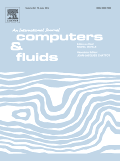
COMPUTERS & FLUIDS
Bridging Theory and Application in Fluid Dynamics ResearchCOMPUTERS & FLUIDS, published by PERGAMON-ELSEVIER SCIENCE LTD, is a premier journal in the fields of Computer Science and Engineering, with a distinguished history dating back to 1973. Its Q1 ranking in both Computer Science (Miscellaneous) and Engineering (Miscellaneous) illustrates its high impact and relevance, being positioned among the top tier of scientific publications. With a robust focus on the intersection of computational methods and fluid dynamics, this journal serves as a vital platform for researchers, professionals, and students dedicated to advancing knowledge and technology within these domains. Although it is not an open-access journal, its articles are accessible through various academic institutions and libraries, ensuring that vital research reaches its intended audience. Readers can explore innovative methodologies and applications, reinforcing the journal's commitment to enhancing the understanding of fluid mechanics through cutting-edge computational approaches. For more details, visit the official website of COMPUTERS & FLUIDS to stay abreast of the latest research advancements.